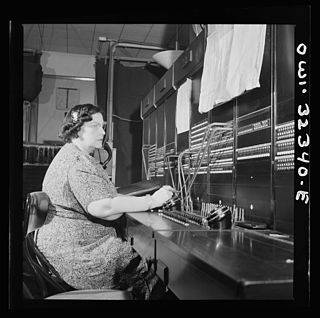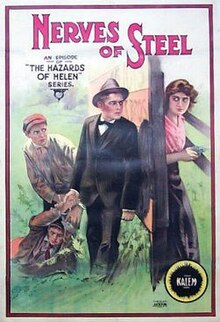
The damsel in distress is a narrative device in which one or more men must rescue a woman who has been kidnapped or placed in other peril. Kinship, love, lust or a combination of those motivate the male protagonist to initiate the narrative.

Francis Ford was an American film actor, writer and director. He was the mentor and elder brother of film director John Ford. As an actor, director and producer, he was one of the first filmmakers in Hollywood.

The Kalem Company was an early American film studio founded in New York City in 1907. It was one of the first companies to make films abroad and to set up winter production facilities, first in Florida and then in California. Kalem was sold to Vitagraph Studios in 1917.

John Paterson McGowan was a pioneering Hollywood actor and director and occasionally a screenwriter and producer. McGowan remains the only Australian to have been made a life member of the Screen Directors Guild.

Helen Holmes was an American silent film actress, producer, director, screenwriter and stuntwoman. She is most notable for starring in the 1914–1917 serial The Hazards of Helen.

Helen Gibson was an American film actress, vaudeville performer, radio performer, film producer, trick rider, and rodeo performer; and is considered to be the first American professional stunt woman.
William Scott Darling was a Canadian-born writer and a pioneer screenwriter and film director in the Hollywood motion picture industry. He is often known in Hollywood histories as Scott Darling, though he was almost invariably credited in films as W. Scott Darling.

The Diamond from the Sky is a 1915 American silent adventure-film serial directed by Jacques Jaccard and William Desmond Taylor and starring Lottie Pickford, Irving Cummings, and William Russell.

The Lost Special is a 1932 American Pre-Code Universal movie serial based on the 1898 short story "The Lost Special" by Arthur Conan Doyle. This adaptation deleted all references to Doyle's Sherlock Holmes character, and moved events to the American Old West.

The Flaming Disc is a 1920 American silent adventure film serial directed by Robert F. Hill. The first episode of the series, "Rails of Death", opened on November 21, 1920. A total of 18 film episodes were produced. The Flaming Disc is now presumed to be a lost film.

The Perils of Pauline is a 1914 American melodrama film serial produced by William Randolph Hearst and released by the Eclectic film company, shown in bi-weekly installments, featuring Pearl White as the title character, an ambitious young heiress with an independent nature and a desire for adventure.

Go Get 'Em Hutch is a 1922 American drama film serial directed by George B. Seitz. The story concerns a crooked lawyer who is the head of a crime syndicate. He seeks to prevent the operation of the ships owned by the heroine, played by Marguerite Clayton. Hutch, the title character played by Charles Hutchison, comes to her rescue.

White Eagle is a 1922 American silent Western film serial directed by Fred Jackman and W. S. Van Dyke. The film is considered to be lost. White Eagle is almost a remake of the earlier Ruth Roland serial Hands Up The serial features a famous scene of Ruth Roland climbing a rope ladder from a moving train to a plane flying overhead.

Edwin Forrest Taylor was an American character actor whose artistic career spanned six different decades, from silents through talkies to the advent of color films.

The Girl and Her Trust is a 1912 American film directed by D. W. Griffith.

Women in telegraphy have been evident since the 1840s. The introduction of practical systems of telegraphy in the 1840s led to the creation of a new occupational category, the telegrapher, telegraphist or telegraph operator. Duties of the telegrapher included sending and receiving telegraphic messages, known as telegrams, using a variety of signaling systems, and routing of trains for the railroads. While telegraphy is often viewed as a males-only occupation, women were also employed as telegraph operators from its earliest days. Telegraphy was one of the first communications technology occupations open to women.
George A. Williams, sometimes known as G.A. Williams or simply as George Williams, was an American actor of the silent film era. Born in 1854 in Kinnickinnic, Wisconsin, he broke into the film industry in 1914. He worked mostly in film shorts, appearing in well over 100 of them in his 14-year career. He would also perform in approximately 20 feature-length films during this span. His first film appearance was in the film short, In the Days of Witchcraft (1913), and he would make his feature debut in 1916's The Dumb Girl of Portici, directed by Lois Weber. 1914 would see him appear in several episodes of the serial, The Hazards of Helen. In 1922, he would be cast as one of the leads in the serial, In the Days of Buffalo Bill, directed by Edward Laemmle. His final film appearance would be in the 1926 silent film, The Winner, directed by Harry J. Brown

The Railroad Raiders of '62 is an American silent film produced by Kalem Company and directed by Sidney Olcott with Jack J. Clark, Robert Vignola and JP McGowan in the leading roles. The action takes place during the U.S. civil war.

A serial film,film serial, movie serial, or chapter play, is a motion picture form popular during the first half of the 20th century, consisting of a series of short subjects exhibited in consecutive order at one theater, generally advancing weekly, until the series is completed. Usually, each serial involves a single set of characters, protagonistic and antagonistic, involved in a single story, which has been edited into chapters after the fashion of serial fiction and the episodes cannot be shown out of order or as a single or a random collection of short subjects.

















